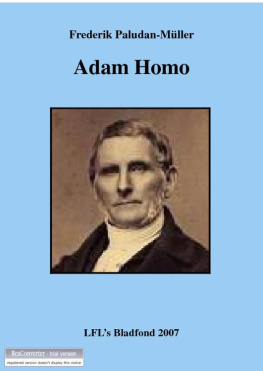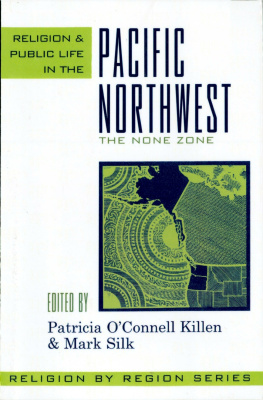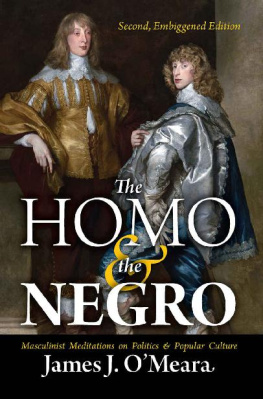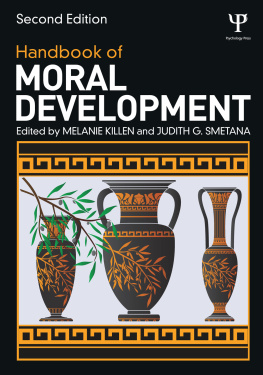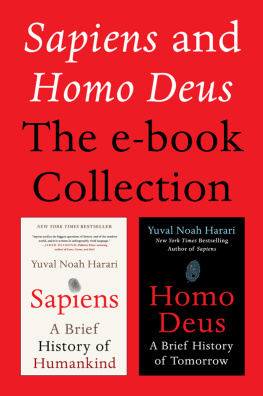Killen - Homo Cinematicus
Here you can read online Killen - Homo Cinematicus full text of the book (entire story) in english for free. Download pdf and epub, get meaning, cover and reviews about this ebook. City: Philadelphia;UNITED STATES, year: 2017, publisher: University of Pennsylvania Press, Inc, genre: Science. Description of the work, (preface) as well as reviews are available. Best literature library LitArk.com created for fans of good reading and offers a wide selection of genres:
Romance novel
Science fiction
Adventure
Detective
Science
History
Home and family
Prose
Art
Politics
Computer
Non-fiction
Religion
Business
Children
Humor
Choose a favorite category and find really read worthwhile books. Enjoy immersion in the world of imagination, feel the emotions of the characters or learn something new for yourself, make an fascinating discovery.

Homo Cinematicus: summary, description and annotation
We offer to read an annotation, description, summary or preface (depends on what the author of the book "Homo Cinematicus" wrote himself). If you haven't found the necessary information about the book — write in the comments, we will try to find it.
Homo Cinematicus — read online for free the complete book (whole text) full work
Below is the text of the book, divided by pages. System saving the place of the last page read, allows you to conveniently read the book "Homo Cinematicus" online for free, without having to search again every time where you left off. Put a bookmark, and you can go to the page where you finished reading at any time.
Font size:
Interval:
Bookmark:
Homo Cinematicus
Series Editors
Angus Burgin
Peter E. Gordon
Joel Isaac
Karuna Mantena
Samuel Moyn
Jennifer Ratner-Rosenhagen
Camille Robcis
Sophia Rosenfeld
Science, Motion Pictures,
and the Making of Modern Germany
Andreas Killen

Copyright 2017 University of Pennsylvania Press
All rights reserved. Except for brief quotations used for purposes of review or scholarly citation, none of this book may be reproduced in any form by any means without written permission from the publisher.
Published by
University of Pennsylvania Press
Philadelphia, Pennsylvania 19104-4112
www.upenn.edu/pennpress
Printed in the United States of America on acid-free paper
10 9 8 7 6 5 4 3 2 1
Library of Congress Cataloging-in-Publication Data
Name: Killen, Andreas, author.
Title: Homo cinematicus : science, motion pictures, and the making of modern Germany / Andreas Killen.
Other titles: Intellectual history of the modern age.
Description: 1st edition. | Philadelphia : University of Pennsylvania Press, [2017] | Series: Intellectual history of the modern age
Identifiers: LCCN 2016053770 | ISBN 9780812249279 (hardcover : alk. paper)
Subjects: LCSH: Motion picturesSocial aspectsGermanyHistory20th century. | Motion picturesGermanyPsychological aspectsHistory20th century. | CinematographyScientific applicationsGermanyHistory20th century. | Psychoanalysis and motion picturesGermanyHistory20th century. | Social sciencesGermanyHistory20th century. | Social changeGermanyHistory20th century.
Classification: LCC PN1993.5.G3 K44 2017 | DDC 791.430943dc23
LC record available at https://lccn.loc.gov/2016053770
BA | Bundesarchiv (Berlin-Lichterfeld) |
BA-FA | Bundesarchiv-Filmarchiv (Berlin) |
GStA | Geheimes Staatsarchiv Preussischer Kulturbesitz (Berlin-Dahlem) |
HUB | Universittsarchiv der Humboldt Universitt zu Berlin |
RMdI | Reichsministerium des Innern |
On the evening of April 4, 1919, Richard Kiliani of the German Foreign Offices Press Department delivered a lengthy speech to officials of his ministry on the topic of film propaganda in foreign nations. During the war, Kiliani had overseen the public relations campaign conducted by Germany in neutral countries like Switzerland. Now, slightly less than six months after the cessation of hostilities, Kiliani turned his attention to the role of film propaganda in the tasks facing the defeated nation. In his remarks he placed particular emphasis on films tremendous power to mobilize mass emotions. Kiliani did not speak in vague terms but cited directly the findings of experimental psychology. He invoked a model of audience response that took into account the key faculties of attention, memory, and the will, and that acknowledged the basic human need for entertainment, yet at the same time remained cognizant of the moral hazards associated with the trash (Schund) that dominated much commercial filmmaking. In claiming a central role for film in the methods of modern statecraft, Kiliani advocated a strategy that avoided direct propaganda and relied instead on what he called an associative technique: The effects of propaganda can and should only be sought through associative, that is to say not direct but indirect methods.... This does not mean, however, that we must sink to the depths of the sensational or the merely titillating. Trash, kitsch, and unmoral material, [which] unfortunately constitute for primitive people the basis of true art, must be strictly avoided.
A likely source for Kilianis observations was Hugo Mnsterbergs recently published The Photoplay: A Psychological Study (1916).
Many Germans, however, were far from prepared to grant the moving image the respect that Mnsterberg showed it. In the fall of 1919, the arch-conservative opinion maker Wilhelm Stapel published a short article titled Homo cinematicus in the pages of the nationalist journal Deutsches Volkstum. In it Stapel described a new anthropological type that, he claimed, had been conjured up by the emergence of the cinema as a social institution. The term homo cinematicus functioned for Stapel as a shorthand for mass man; in terms echoing those of French crowd theorist Gustave Le Bon, Stapel described this type as a member of a suggestible throng, lacking willpower or discrimination, addicted to slogans, and prone to becoming hypnotically fixated on any image that commanded its field of vision. He cast film as one of the chief dangers facing Germany, both a political and a public health problem of major proportions, and implicated the new type of cinematically conditioned mass man in many of the crises that had overtaken the nation, not least the short-lived revolution that had accompanied the end of the war. Without indulging in the overt anti-Semitism that marked many of his other writings, Stapel used coded language to convey what was at stake in confronting the essentially alien forces associated with cinema: Either film-capital or our culture will go smash. He dismissed the possibility that censorship could adequately combat the dangers that he associated with popular cinema.
Stapels views reflect the dark mood of conservatives at this turbulent moment in German history. At the time his article was published, censorship had been officially abolished by the new Weimar government, and in the absence of the controls formerly exercised by the German empires rather patchwork system of censorship, German theaters were flooded by films that included not just some of the landmark works of early Weimar filmmakingnotably, The Cabinet of Dr. Caligari, Nerves, and Different from the Othersbut also a host of now mostly forgotten works trafficking in erotic themes, often under the banner of sexual enlightenment. The baptism of a national film industry amid the conditions of political and social breakdown that marked the wars end was experienced as a cultural catastrophe by conservatives such as Stapel, and such figures would repeatedly invoke this period as one of deep horror. From such a perspective, even the reinstatement of censorship in 1920 could do little to right a world whose moral values had been turned upside down, especially given that such measures remained powerless in the face of the real danger: the appearance of a new crowd type emboldened to demand new rights and forms of emancipation as well as of entertainment.
Extreme though Stapels views were, they nonetheless capture a basic truth about the role that film had assumed in the lives of Germans at this momenta moment in which the vacuum left by collapsing institutions was partially filled by moving images, whose power to mediate citizens perceptions of reality was frequently attested to by contemporaries. Describing a scene in revolutionary Berlin on the historic day of November 9, 1918, Harry Graf Kessler (who served as Kilianis representative in overseeing German propaganda in Switzerland) evoked its resemblance to scenes from a film of the Russian Revolution; a few days later, with the initial disturbances having passed, Kessler reflected on the lack of disruption of tram and telephone services in the capital and wrote that [t]he colossal, world-shaking upheaval has scurried across Berlins day to day life like an incident in a crime film.
Next pageFont size:
Interval:
Bookmark:
Similar books «Homo Cinematicus»
Look at similar books to Homo Cinematicus. We have selected literature similar in name and meaning in the hope of providing readers with more options to find new, interesting, not yet read works.
Discussion, reviews of the book Homo Cinematicus and just readers' own opinions. Leave your comments, write what you think about the work, its meaning or the main characters. Specify what exactly you liked and what you didn't like, and why you think so.





